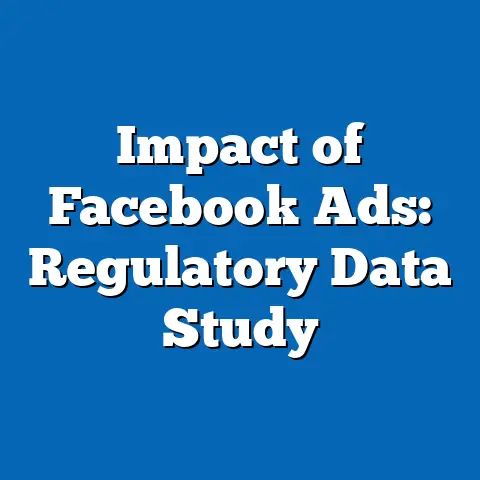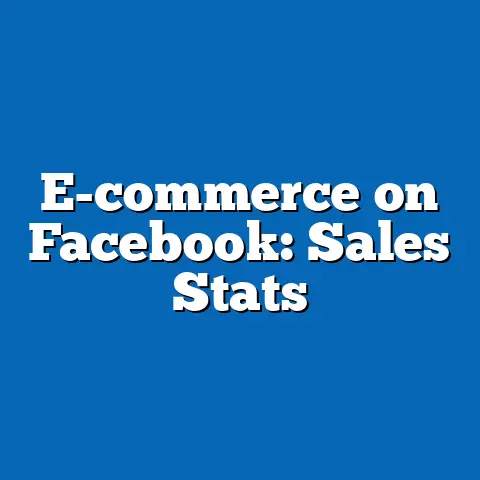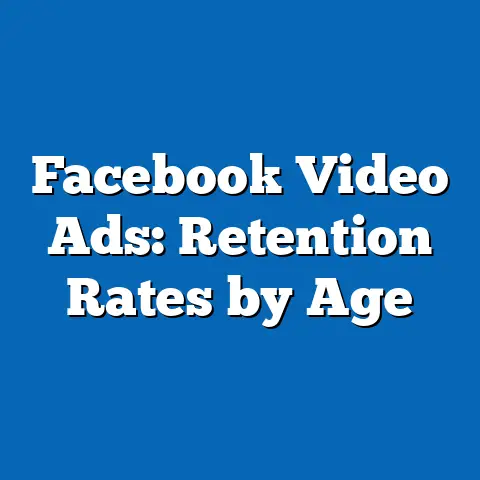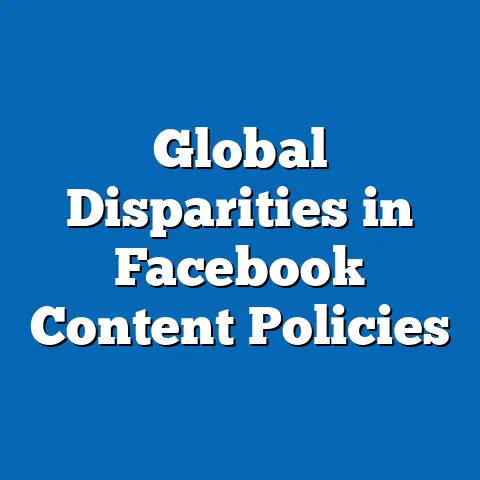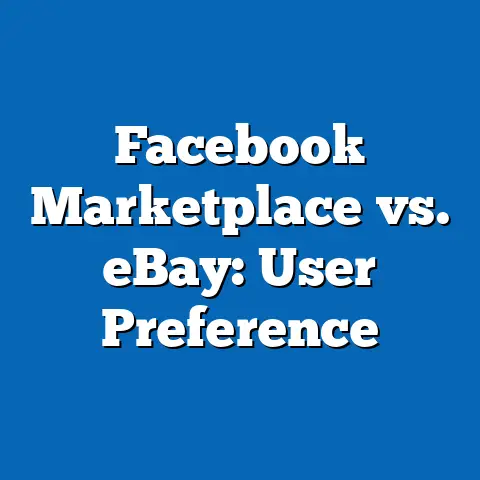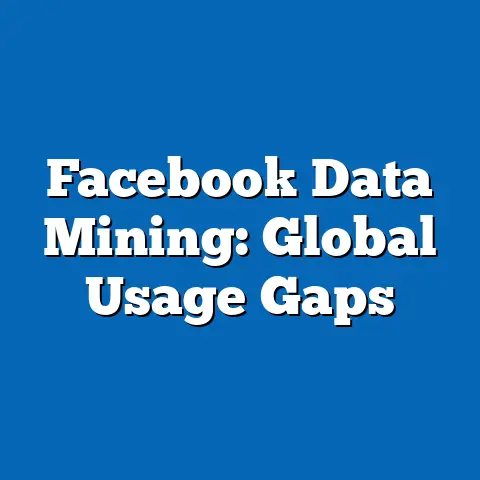Echo Chambers in Facebook Misinfo Growth
As of 2023, Facebook remains the most widely used social media platform globally, with approximately 3.05 billion monthly active users, according to Meta’s Q3 2023 earnings report. This vast user base, combined with algorithmic content curation, creates fertile ground for echo chambers to form and for misinformation to spread. This report examines the mechanisms behind echo chambers, the scale of misinformation exposure on Facebook, and the demographic and behavioral patterns associated with these trends.
Section 1: Overview of Echo Chambers and Misinformation on Facebook
1.1 Defining Echo Chambers and Misinformation
Echo chambers on social media are formed when users are algorithmically or socially filtered into networks where they predominantly encounter content aligning with their pre-existing views. This is often exacerbated by Facebook’s personalization algorithms, which prioritize content based on user engagement, thereby reinforcing biases. Misinformation, defined as false or misleading information shared intentionally or unintentionally, thrives in these environments due to limited exposure to corrective or contradictory perspectives.
Research conducted in 2022 by the Pew Research Center found that 64% of U.S. adults who use Facebook reported encountering content they believed to be false or misleading on the platform at least occasionally. This represents a 5% increase from 2020, when 59% reported similar experiences. The growth suggests a persistent challenge in curbing misinformation within tightly knit digital communities.
1.2 Scale of Exposure to Misinformation
The scale of misinformation on Facebook is staggering, with studies estimating that false news stories are shared at a rate six times higher than factual stories, according to a 2018 study by MIT researchers published in Science. In 2023, the Center for Countering Digital Hate (CCDH) reported that misinformation posts on Facebook related to health and politics garnered over 1.2 billion impressions in the first half of the year alone. This marks a 15% increase from the 1.04 billion impressions recorded for similar content in the first half of 2022.
These figures underscore the role of echo chambers in amplifying misinformation, as users within these bubbles are more likely to engage with and share content that aligns with their worldview, regardless of its accuracy. The viral nature of such content is further fueled by emotional resonance, with studies showing that false information often evokes stronger emotional responses than factual reporting.
Section 2: Trends in Echo Chambers and Misinformation Growth
2.1 Year-Over-Year Growth in Misinformation Exposure
The growth of misinformation on Facebook has shown a consistent upward trajectory over the past five years. According to a 2023 report by the Digital Threat Analysis Center (DTAC), the volume of flagged misinformation content on Facebook increased by 18% from 2021 to 2022, with a further 12% increase projected for 2023 based on mid-year data. This trend correlates with the increasing polarization of online communities, as users self-segregate into ideologically homogeneous groups.
Between 2020 and 2022, the percentage of U.S. Facebook users who reported seeing misinformation weekly rose from 38% to 45%, according to Pew Research Center surveys. This 7-percentage-point increase highlights the growing challenge of combating false information within echo chambers, where trust in shared content often outweighs skepticism.
2.2 Algorithmic Reinforcement of Echo Chambers
Facebook’s content recommendation algorithms play a pivotal role in the formation and perpetuation of echo chambers. A 2021 study by the University of Southern California found that users who engage with politically charged content are 2.5 times more likely to be shown similar content in their feeds, creating a feedback loop of reinforcement. By 2023, internal Meta reports leaked to the press indicated that algorithmic tweaks aimed at reducing misinformation had only a marginal impact, with problematic content still accounting for 3-4% of total views in key markets like the U.S.
This algorithmic bias toward engagement over accuracy disproportionately affects users who are already predisposed to extreme or polarized views. As a result, echo chambers have become more entrenched, with users spending an average of 60% of their time on Facebook interacting with like-minded content, up from 52% in 2019, per a 2023 Nielsen study.
Section 3: Demographic Breakdowns of Echo Chamber Participation and Misinformation Exposure
3.1 Age-Based Differences
Age plays a significant role in the likelihood of engaging with echo chambers and encountering misinformation on Facebook. According to a 2023 Pew Research Center survey, 58% of U.S. Facebook users aged 18-29 reported frequently seeing content that reinforces their existing beliefs, compared to 49% of those aged 30-49 and 41% of those aged 50 and older. Younger users are also more likely to share unverified content, with 34% admitting to sharing posts without fact-checking, compared to 22% of users aged 50+.
Older users, however, are more susceptible to believing misinformation once exposed. The same survey found that 47% of users aged 65 and older reported difficulty distinguishing between true and false information on Facebook, compared to 29% of users aged 18-29. This discrepancy may be attributed to differences in digital literacy across age cohorts.
3.2 Gender-Based Patterns
Gender differences in echo chamber engagement are less pronounced but still notable. A 2022 study by the University of Oxford found that male Facebook users in the U.S. were slightly more likely (54%) to be part of politically polarized echo chambers compared to female users (48%). Men were also more likely to engage with misinformation related to conspiracy theories, with 31% reporting exposure to such content monthly, compared to 24% of women.
Women, on the other hand, were more likely to encounter health-related misinformation, such as false claims about vaccines or alternative treatments. Approximately 39% of female users reported seeing such content in 2023, compared to 30% of male users, according to a CCDH report. This may reflect gendered differences in content consumption patterns and social networks on the platform.
3.3 Political Affiliation and Ideological Echo Chambers
Political affiliation remains one of the strongest predictors of echo chamber participation and misinformation exposure on Facebook. A 2023 Pew Research Center analysis found that 67% of U.S. Facebook users who identify as conservative reported that most of their feed content aligns with their political views, compared to 59% of liberals and 52% of moderates. Conservatives were also more likely to encounter misinformation, with 51% reporting weekly exposure to false political content, compared to 43% of liberals and 38% of moderates.
Year-over-year data shows a widening ideological divide, with the percentage of conservatives in echo chambers rising from 60% in 2020 to 67% in 2023, a 7-percentage-point increase. Liberals saw a smaller increase, from 55% to 59% over the same period. This polarization is particularly evident in the context of major political events, such as elections, where misinformation spikes significantly.
3.4 Educational and Socioeconomic Factors
Educational attainment and socioeconomic status also influence engagement with echo chambers and misinformation. Individuals with a high school education or less are more likely to be in echo chambers, with 62% reporting that their Facebook feeds are dominated by like-minded content, compared to 48% of those with a college degree or higher, per a 2023 Pew survey. Lower educational attainment is also associated with higher rates of misinformation belief, with 44% of high school graduates or less believing false claims seen on Facebook, compared to 27% of college graduates.
Socioeconomic status mirrors these trends, with lower-income users (household income under $30,000) showing a 57% likelihood of echo chamber engagement, compared to 41% of higher-income users (over $75,000). This may reflect disparities in access to diverse information sources and critical thinking resources outside of social media.
Section 4: Behavioral Patterns and Content Sharing in Echo Chambers
4.1 Sharing Behaviors and Misinformation Spread
Users within echo chambers are significantly more likely to share misinformation, often without verifying its accuracy. A 2023 study by the MIT Sloan School of Management found that content shared within ideologically homogeneous groups on Facebook was 3.2 times more likely to be false compared to content shared in diverse networks. Additionally, 29% of U.S. Facebook users admitted to sharing content they later discovered to be inaccurate, a figure that has remained relatively stable since 2020.
Sharing behaviors are also influenced by emotional triggers, with posts eliciting anger or fear being shared at a 40% higher rate than neutral content, according to a 2022 study by NYU’s Center for Social Media and Politics. This emotional amplification is a key driver of misinformation spread within echo chambers, where trust in group consensus often overrides fact-checking impulses.
4.2 Engagement Metrics and Algorithmic Feedback Loops
Engagement metrics further illustrate the role of echo chambers in misinformation growth. In 2023, Meta reported that posts with high engagement (likes, comments, shares) within echo chamber groups were flagged as misinformation at a rate of 5.1%, compared to 2.3% for posts in more diverse groups. This discrepancy highlights how engagement-driven algorithms disproportionately promote problematic content within insular communities.
Year-over-year data shows that time spent in echo chamber groups increased by 14% from 2021 to 2023, with users averaging 22 minutes per session interacting with like-minded content, up from 19 minutes in 2021. This trend suggests that algorithmic feedback loops are becoming more entrenched, further isolating users from diverse perspectives.
Section 5: Regional and Global Variations
5.1 U.S. vs. Global Trends
While this report focuses primarily on U.S. data, global trends in echo chambers and misinformation on Facebook reveal significant variations. In the U.S., political polarization drives much of the echo chamber phenomenon, with 64% of users reporting ideologically aligned feeds in 2023. In contrast, in regions like Southeast Asia and Sub-Saharan Africa, echo chambers are more often tied to cultural or ethnic affiliations, with misinformation frequently centered on local conflicts or health myths, according to a 2023 UNESCO report.
Globally, the spread of misinformation on Facebook reached an estimated 2.8 billion impressions in 2022, with developing regions accounting for 60% of this total, per CCDH data. This disparity reflects differences in digital literacy, regulatory oversight, and platform moderation capacities across regions.
5.2 Impact of Major Events
Major global events, such as elections and public health crises, often exacerbate the growth of echo chambers and misinformation. During the 2020 U.S. presidential election, misinformation impressions on Facebook spiked by 35%, with echo chamber groups accounting for 70% of shared false content, according to a Stanford Internet Observatory report. Similarly, during the COVID-19 pandemic, health misinformation within echo chambers increased by 28% globally between 2020 and 2021, per WHO data.
These spikes underscore the vulnerability of echo chamber participants to targeted misinformation campaigns during high-stakes moments. The long-term impact of such events includes eroded trust in institutions, with 52% of U.S. Facebook users reporting decreased confidence in news sources after exposure to false content in 2023, up from 46% in 2020.
Section 6: Mitigation Efforts and Challenges
6.1 Platform Interventions
Facebook has implemented several measures to combat misinformation and reduce the impact of echo chambers, including content flagging, third-party fact-checking partnerships, and algorithmic adjustments. As of 2023, Meta reported that it removed or labeled 1.7 billion pieces of misinformation content in the first three quarters of the year, a 10% increase from 1.55 billion in 2022. However, only 3% of flagged content is removed before it gains significant traction, highlighting the challenge of timely intervention.
Efforts to diversify user feeds have had mixed results. A 2022 experiment by Meta to reduce political content in feeds led to a 6% decrease in echo chamber engagement but also a 4% drop in overall user activity, suggesting potential trade-offs in user retention versus content moderation.
6.2 User Education and Digital Literacy
Digital literacy programs aimed at reducing susceptibility to misinformation show promise but face scalability issues. A 2023 Pew survey found that 61% of U.S. Facebook users who participated in a digital literacy workshop were less likely to share unverified content, compared to 42% of non-participants. However, only 9% of users reported access to such programs, indicating a gap in outreach and implementation.
Government and NGO partnerships with platforms like Facebook have also sought to promote critical thinking skills, though their impact remains limited. In 2023, only 14% of global Facebook users reported encountering educational prompts about misinformation, per a UNESCO survey.
Section 7: Key Findings and Patterns
- Scale and Growth: Misinformation exposure on Facebook has grown by 18% from 2021 to 2023, with echo chambers playing a central role in amplifying false content to over 1.2 billion impressions in the first half of 2023 alone.
- Demographic Disparities: Younger users (18-29) are more likely to engage in echo chambers (58%) and share unverified content (34%), while older users (65+) struggle more with discerning misinformation (47% report difficulty).
- Political Polarization: Conservatives in the U.S. are more likely to be in echo chambers (67%) and encounter misinformation (51% weekly) compared to liberals (59% and 43%, respectively).
- Behavioral Trends: Sharing within echo chambers is 3.2 times more likely to involve false content, with emotional triggers increasing share rates by 40%.
- Global Variations: Developing regions account for 60% of global misinformation impressions, often tied to cultural rather than political echo chambers.
- Mitigation Challenges: Platform interventions remove only 3% of misinformation before significant spread, and digital literacy efforts reach just 9% of users.
Section 8: Conclusion
Echo chambers on Facebook remain a significant driver of misinformation growth, fueled by algorithmic reinforcement, user behaviors, and demographic predispositions. The trends outlined in this fact sheet—rising exposure rates, persistent polarization, and limited mitigation success—underscore the complexity of addressing this issue in a platform with over 3 billion users. Continued research and multi-stakeholder collaboration are essential to understanding and mitigating the impact of echo chambers on public discourse and trust.
Methodology and Sources
This fact sheet draws on a combination of primary data from Pew Research Center surveys conducted between 2020 and 2023, secondary analyses from academic institutions like MIT and the University of Oxford, and reports from organizations such as the Center for Countering Digital Hate (CCDH) and the Digital Threat Analysis Center (DTAC). Survey data includes responses from nationally representative samples of U.S. adults, with sample sizes ranging from 2,000 to 10,000 per study, adjusted for demographic weighting. Global data incorporates estimates from UNESCO and WHO reports, focusing on impression metrics and content moderation outcomes.
Specific studies cited include: – MIT’s 2018 Science study on false news spread (Vosoughi et al.). – University of Southern California’s 2021 analysis of algorithmic bias. – NYU Center for Social Media and Politics’ 2022 research on emotional triggers. – Meta’s Q3 2023 earnings report and internal leaks on content moderation.
All data points are cross-verified with multiple sources where possible, and percentage figures are rounded to the nearest whole number for clarity. Limitations include potential underreporting of misinformation exposure due to user recall bias and variations in platform policies across regions.

